 A thin sign in Sespe Wilderness only but several inches wide with not another sign in sight.
A thin sign in Sespe Wilderness only but several inches wide with not another sign in sight.
Once upon a time not long ago, following wildfire, thoughtful land managers in Ventura County reposted sliver-thin signs along Sespe Wilderness trail, there marking the condor sanctuary boundaryline.
This is federally designated critical habitat of the highest order.
What other wild creature in America has been the focus of more investment in time and money through as many decades to save a single species? A national icon.
A hiker walking beyond the boundary might accidentally drop a piece of shiny and wiggly plastic microtrash, which could be mistaken for food by a condor that might then choke or die a long, slow and miserable death by starvation from a trash-clogged gut.
And yet the sensitive habitat signs for the condor are rather discreet and few and far between. A light touch.
In the size and placement and in the number installed the signs are respectful of place and of people.
Does doubling the size and number of signs, and placing them twice as close together, accomplish twice as much protection for red-legged frogs and southwestern pond turtles in Baron Ranch?
Some of the signs are placed in brush too dense for anybody but a masochist to even bother trying to enter.
The arroyo is of no interest to average folks and uninviting in its overgrown appearance, but for the openess where the trail itself crosses.
And neither the frog nor turtle are currently listed under the Endangered Species Act like the California condor.
So why the gauntlet of hamfisted signage?
The gratuitous institutional glare of the Baron Ranch signs stand in stark contrast to the slim, embellished condor markers.
Would that when the next wildfire sweeps the canyon clear at Baron Ranch, less trace will be left by land managers, and instead their work will be accomplished with a lighter touch.
Why not?
 The overbearing sign installation along Arroyo Quemado Trail in Baron Ranch. A person can stand at one sign and see the next one not far off, on either side of the trail. At some point in the not too distant future brush trimming work will be required to keep some of the signs visible.
The overbearing sign installation along Arroyo Quemado Trail in Baron Ranch. A person can stand at one sign and see the next one not far off, on either side of the trail. At some point in the not too distant future brush trimming work will be required to keep some of the signs visible.
Related Post:







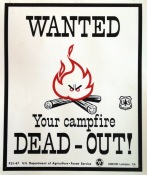

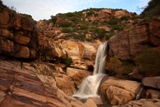
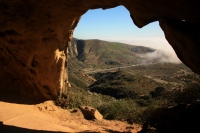

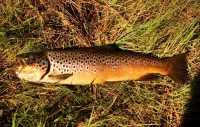
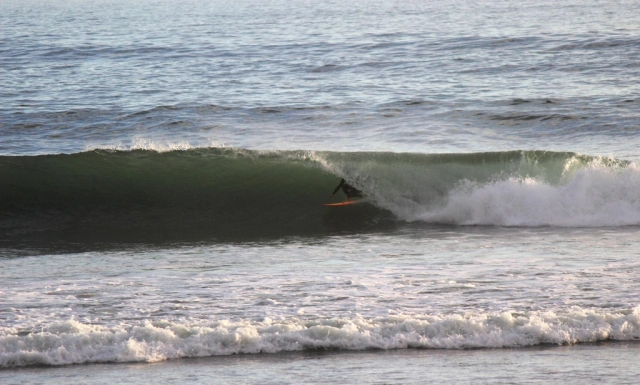
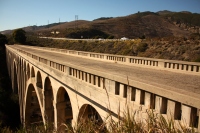
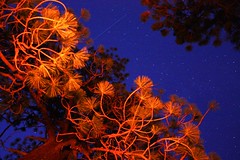


















The Barron Ranch was purchased at the urging of then Supervisor Bill Wallace. It was purchased by Public Works to “shield” the Tajiguas Landfill from urban encroachment. In reality it was deemed the replacement canyon for trash when Pila Canyon (the home of the Tajiguas Landfill) was full. Opposition to creating another ugly, smelly, garbage dump on the Gaviota Coast scuttled the plan. So Pila Canyon was further bulldozed to allow the landfill to expand. That expansion meant that endangered Red Legged Frogs living in upper Pila canyon had to be moved and into Baron Canyon and they were relocated. Hence the signs even though it is highly doubtful that the frogs will make a permanent home there. Having the County’s trash department oversee a public trail is akin to Having the sewer department run the drinking water department.
I’ve read the frogs were first found in Pila Canyon in a humanmade ditch. What baseline of historical data exists regarding these creatures in these places prior to such radical human alteration?
Hello.
Is it too late for you to edit this? Only one ’s’ in masochist.
Thanks.
You are very welcome. Interesting article and I agree wholeheartedly that signage should always be more discreet.
It’s easy for government agencies and land trusts to post a few signs and call it good. Managing the resources is a lot more difficult, and both of these entities struggle w/ numerous resource management issues that they have neither the resources nor the personnel to deal with. The Land Trust is primarily concerned w/ generating revenue, and the LPNF is simply a huge lumbering bureaucratic beast, w/o much emphasis on the resources they are entrusted w/ protecting… unless, of course, the resources in question involve cattle grazing on public lands, oil and gas extraction, and, tree cutting, all extremely destructive activities that they severely damage the land & cost the taxpayers millions of $’s/year to facilitate.
Thanks, Louis.